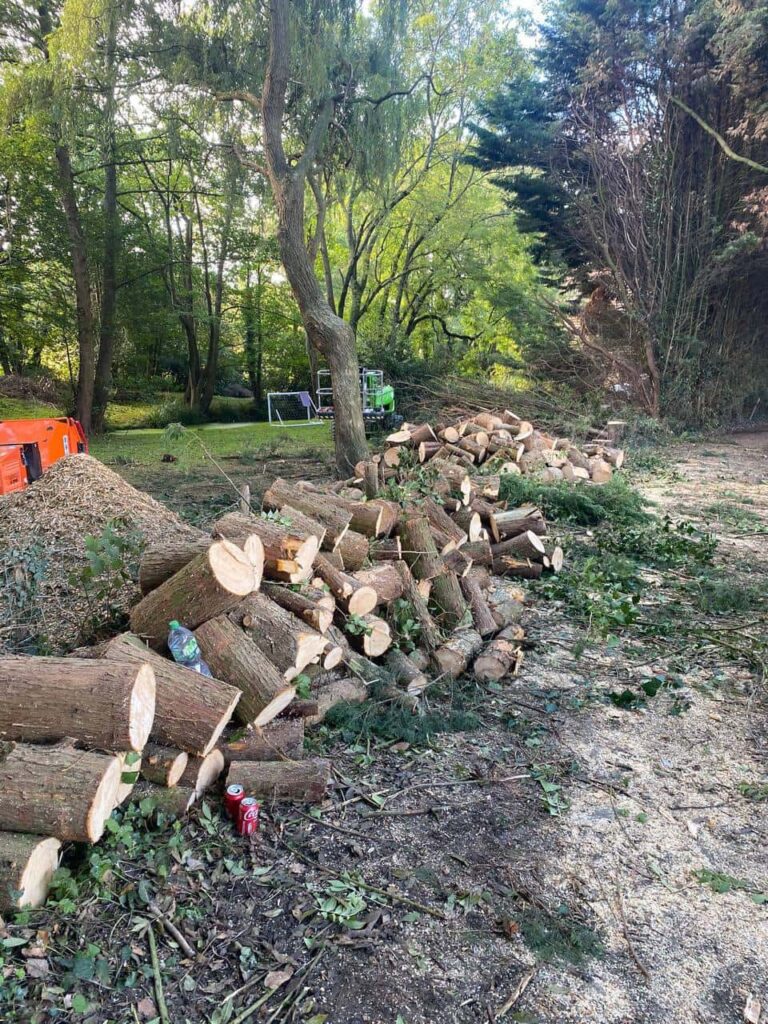7 Tree Cutting Mistakes That Damage Property Value
Introduction
Mature trees are one of the most valuable features a property can offer. They add beauty, character, privacy, and environmental benefits. However, poor tree cutting practices can quickly turn these assets into liabilities—reducing kerb appeal, creating safety risks, and even lowering market value.
At Harleston Tree Surgeons, we’ve helped homeowners throughout Harleston and across Norfolk correct the costly effects of improper tree work. In this article, we highlight seven common mistakes in tree cutting that can damage your property’s value—and how to avoid them with the right approach.
Key Takeaways
- Poor pruning harms tree structure, health, and appearance
- Cutting trees incorrectly or at the wrong time can lead to long-term damage
- Unprofessional tree work may create legal or safety issues
- Proper care enhances landscape value and overall presentation
1. Topping Trees
Topping—removing large sections from the top of a tree—is a quick fix with serious consequences. It causes stress, weakens the tree, and encourages rapid, unstable regrowth. Visually, topped trees look stunted and unnatural, reducing the appeal of your garden. Over time, the tree becomes more vulnerable to disease and may need complete removal.
2. Random or Over-Pruning
Cutting too much, too quickly, or without a clear objective often results in misshapen trees that don’t recover well. Over-pruned trees may:
- Develop weak limbs
- Lose their natural structure
- Struggle to regrow properly
These trees become more of an eyesore than an asset, and buyers may see them as future maintenance costs.
3. Removing Healthy Trees Without Cause
A mature, healthy tree can add substantial value to your property. Removing it for convenience—or based on incorrect assumptions about growth or risk—can have the opposite effect. Trees contribute to:
- Cooling and shade
- Screening from roads or neighbours
- Biodiversity and garden interest
Unless the tree presents a genuine hazard, removal often creates more loss than gain.
4. Ignoring Property Lines and Neighbours
Trimming or removing trees without considering boundaries can lead to disputes or claims for damage. Common mistakes include:
- Cutting branches that extend beyond your property without agreement
- Allowing branches or roots to interfere with structures or fencing
- Failing to assess shared ownership or protected status
In a village setting like Harleston, where space can be tight, sensitivity to neighbours is essential.
5. Cutting at the Wrong Time of Year
Tree cutting is not a one-size-fits-all task. Different species respond better to pruning at specific times of year. For example:
- Many trees benefit from dormant-season pruning
- Spring cutting may impact flowering or sap flow
- Summer cuts can reduce growth but also risk sun scorch
Poorly timed cuts can stunt growth, attract pests, and weaken the overall vitality of your trees.
6. Leaving Stumps or Untidy Results
Half-finished work—such as leaving stumps in place, failing to clear branches, or making rough cuts—leaves a garden looking neglected. Visible damage to trees and surrounding plants can lower the perception of property care, which directly impacts value and buyer confidence.
7. Taking on Tree Work Without Proper Skill
DIY tree cutting often seems like a cost-saving choice, but it rarely pays off. Inexperienced attempts can result in:
- Unsafe limb removal
- Damaged trees or gardens
- Poor regrowth and aesthetic issues
Even seemingly small errors can turn a thriving tree into a declining liability. Potential buyers may be put off by signs of unprofessional care.
Conclusion
Tree care should enhance the look and safety of your property—not detract from it. Avoiding these seven common mistakes ensures your trees remain a strong feature of your garden, contributing to the value and enjoyment of your home.
At Harleston Tree Surgeons, we offer professional, reliable tree services across Norfolk, helping homeowners protect and enhance their green spaces. If you want to ensure your trees are supporting—not damaging—your property’s value, contact us today for expert advice and trusted solutions.
Call us on: 01379 773 584
Click here to find out more about Harleston Tree Surgeons
Click here to complete our contact form and see how we can help with your tree needs.

